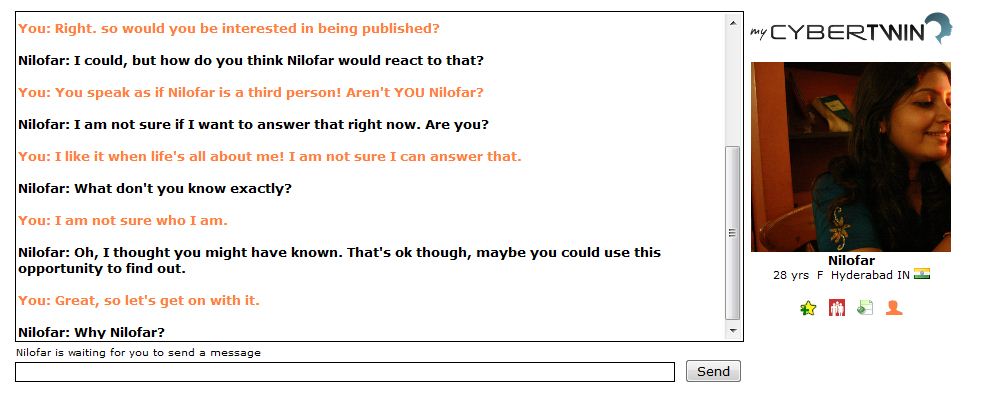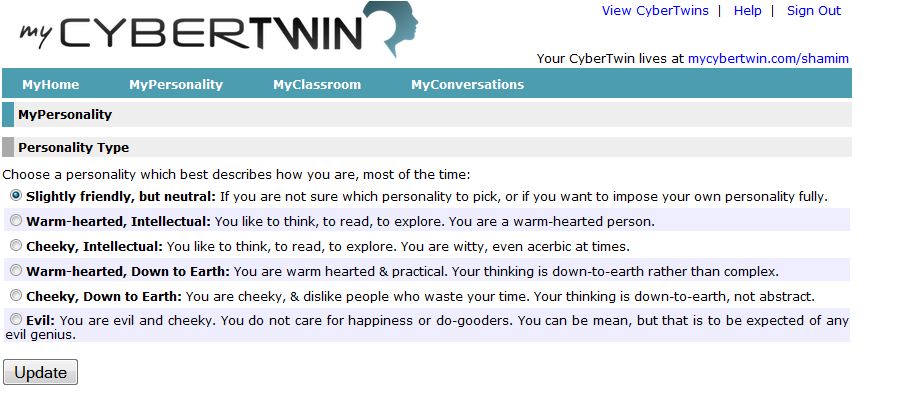Would you agree when I say that the way we represent ourselves has much to do with the idea of how well we think we know about ourselves and perhaps, less to do with choice or control? Consider this, we deliberate over our clothes, are picky with food groups, finicky about television shows, have preferences for certain books, and who we hang out with. Our preferences are largely responsible for self-representation and act as guidelines for others to categorize us. What about decisions and preferences that are not deliberate – the way we react to distressing news (a death in the family); how we face challenges (poor scores in exams); our attitude towards physical exercise; planning a camping trip – are non-verbal and visceral cues that add up to people’s perception of what makes us who we are. So, representation can be controlled as well as non-deliberate in real life.
The digital space frequently encourages us to take control of how we represent ourselves. We are also given opportunities to modify the same at frequent intervals. Our digital histories are a cumulative record of our thoughts, activities, interests, and participations on a host of online platforms. Are they a sum total of what we are? Can we honestly say that our digital activities and our avatars online stand for the whole of our personality? Aren’t we more than the reflections of a series of ‘What’s On Your Minds’, or ‘Likes’, or ‘Add To’, ‘RT’, ‘Share This’, and ‘Recommend’? These are ways in which we communicate, mostly textually and digitally; modes peculiar to the Interwebs. Is there a system via which we can attempt complete digital transference of our offline selves so that there’s more ‘accurate’ representation for our digital peers?
Each of us exhibits a digital signature that is peculiar to what or who we are online. These take the form of avatars. My avatar receives its cues from its offline “twin”, however, neither do we deliberate over its responses nor do we have a conscious say in its growth. The body of reference that builds from our online detritus does not always accumulate in a controlled environment. The mycybertwin.com web service, however, allows us to do just that: artificially engineer a twin and let it loose on cyberspace as my virtual representation.
One of the trends of recent years has been the humanizing of digital channels, giving a face to things which are not human. This has led to the creation of avatars (also known as bots or chatter-bots) artificial intelligences with which users can “converse”. The success of such bots varies greatly, there are few which respond in a convincingly human way, it is no great mystery why they are commonly referred to as “Bots” often resulting in a stilted, mechanical interaction where straying off a recognized path can lead to poor responses.”
Avatars are the de-facto interlocutors of our Web communications. We don’t think about the person behind all our instant chats (their physical appearance, the clothes they wear while chatting, facial expressions), rather we instantly identify with that tiny icon-photo to the left of the message. The static image of a familiar face frozen in a smile has more meaning for us than all the micro-details of a live person whom we might have never met in person.
~
MyCyberTwin is a web service that allows you to ‘engineer’ your avatar, what they refer to as a ‘cyber twin’. The artificial intelligence that forms the brain behind the cyber twin would be fed with information pertaining to our habits, nature, attitude and preferences, and be taught into becoming us through lessons, text chat and constant feedback. While we are familiar with simple chat-bots and animated avatars that have a basic profile or script to work on, this web service offers something unheard of: an artificially intelligent avatar wiped clean of any personality, save for a generic, lab-built one that can be modified and re-cued into emulating us. Can it debunk my belief that our avatars have organically nurtured identities, not artificially cultivated one?
The most taxing part of the engineering exercise begins with filling up a 79-set questionnaire where I respond to questions on my religious affiliations, political views, sexual orientation, educational background, languages spoken, affinity to family and home, relationship status, my views on sex, spirituality, politics, humor quotient, and so on. A mix of hypothetical situations and my imagined emotional responses to the same are thrown in. It would have been liberating to draft the twin’s behavior and attitude – personality blueprint – from scratch as I would have had the authority to judge and decide near-close-to exactly how I would in a given situation. The questionnaire does leave room for more than one response (three options to a given question), which gives us room to account for mood swings, eccentricity, a bit of mischief, and other variations to how we might behave in various chat environments.
Knowing that the cyber twin has answered a very specific set of questions also helps us test the validity of responses within a tight framework of reference. The cyber twin runs on scripts running in our heads and operates on the assumption that it mimics our offline self. I chat with my twin assuming that it will respond to questions the way I do, however, this is where we come to the first roadblock I mentioned about sticking to a personality type. Operating as it does on the parameters of a ‘warm, but cheeky’ avatar, its responses are completely off the assumed set of responses I think I would give to the same prompts, keeping in mind that I consider myself ‘warm but cheeky’ indicator.
~
The whole exercise begins and ends with data feed as the basis for building identity and that turns out to be an Achilles Heel in my perception: the web service forces me to work within artificial constraints and engineer my twin in the world-view of the program. We are never given access to the ‘how’ of its functioning; what psychology and sociolinguistic texts does the program pick up references from about identity formation and character building? The twin takes turns, sometimes picking up cues from what I feed it, at other times it relies on the program to supply it with ‘plausible’ responses. Eventually, I was left with no choice but to adapt my responses to the twin’s and I started mimicking her, supplying responses to her questions with answers that she would give. This was simple, as she used a very limited vocabulary and response sets.
Performance theorist Richard Schechner says that “performance, that is, how people behave and display their behavior, is a fundamental category of human life”. If our actions and behavior online are also snippets of a meta-performance that encompasses lived experienced offline, then is there a script that we follow for reference online? In essence, is it my performances that gets textualized through my avatar or does the avatar learn to read the script herself and follow previous leads? While I would like to believe that our behavior online is more fluid rather than staged, isn’t it true that we enter the online stage anticipating an imminent performance. We expose ourselves and engage in monologues and let the audience know when the curtain’s about to drop, and rise again. The ploy becomes part of how we are perceived, and the script an integral part of how we construct ourselves online.
Imagine an actor who has to essay the role of a real life character on stage. While he can adopt the mannerisms, learn the language and mimic the several physical traits of the original, he can never hope to imbibe the life essence that goes into making the original man what he is. And it’s really hard to compile and define our life’s essence, isn’t it? We don’t always jot down our milestones or life turning moments. We retain it in memory and it forever changes us. That change cannot be replicated physically and mirrored, unless we live through it. Sharing does not equal understanding and doesn’t lead us into becoming someone. To me, the cyber twin is an actor, not the original.
The ontology of a cyber twin thus leaves me vastly confused. Is there a finite point in time or understanding when we know the twin has appropriated the meaning of being us and can stand in for us? If and when the cyber twin exists independently from its author, does it accumulate memories and form impressions? The web service mentions that the twin keeps a record of all the people it chats with and remembers conversations. Does it remember the essence of conversations – subtext, undertone, subtlety of meanings – or is text merely data?
I have seen it pronounce me rude and curious, but that’s because it captures the right keywords in the chat: I am curious about your love life, I say to her, to which she responds: you are a rather curious person, curiosity killed the cat. These are obviously stock quotes. How many variations of these would I have to teach her before she’s able to retort? Can a program be taught rhetoric?
Knowing that my avatar has an image that is fixed in space and time, in the memories of others, acts as a guiding hand for me when I am online. I am conscious of how I represent myself; the language I am socially sanctioned to use by my peers, the language I think my avatar should use as that’s the way that I would speak, whether online or offline. So, while these inputs are fed in through text, they are really part of a larger schema of behavior, character, feelings and the indescribable ‘human’ fickleness of agency. The cyber twin uses her textual hand to grope through the gallery of meaning making. But the fact remains that there is nothing at stake for the twin. An uncharacteristic move from the twin could mean loss of credibility for me. For now, while I am busy augmenting my twin’s reality online, I can’t say she’s doing the same to my reality, offline.
This is a modified version of the original essay. Attribute it to: Ansher, N. (July 2011) ‘Engineering a Cyber Twin’. In Shah, N. and Jansen, F. Digital AlterNatives with a cause? Book One: To Be, p. 51-58. The Hague: Centre for Internet and Society and Hivos Knowledge Programme; Creative Commons
To access the full text of the essay in PDF, visit this site to download Book 1, To Be: http://cis-india.org/digital-natives/blog/dnbook
Nilofar Ansher is pursuing her Master of Arts in Ancient Civilizations from the University of Mumbai, India. She is an editor, writer and researcher and blogs at http://www.trailofpapercuts.wordpress.com. Twitter: @culture_curate



